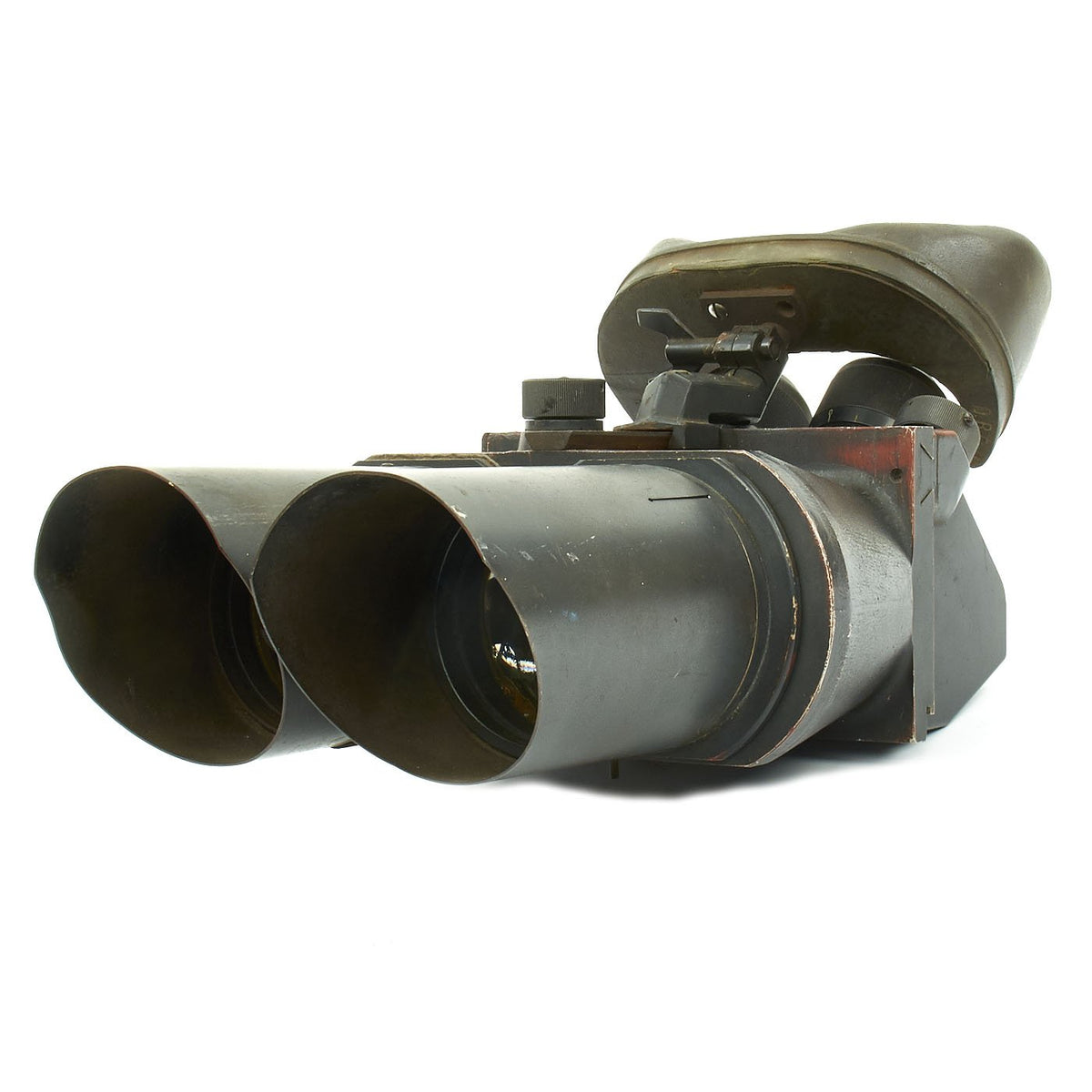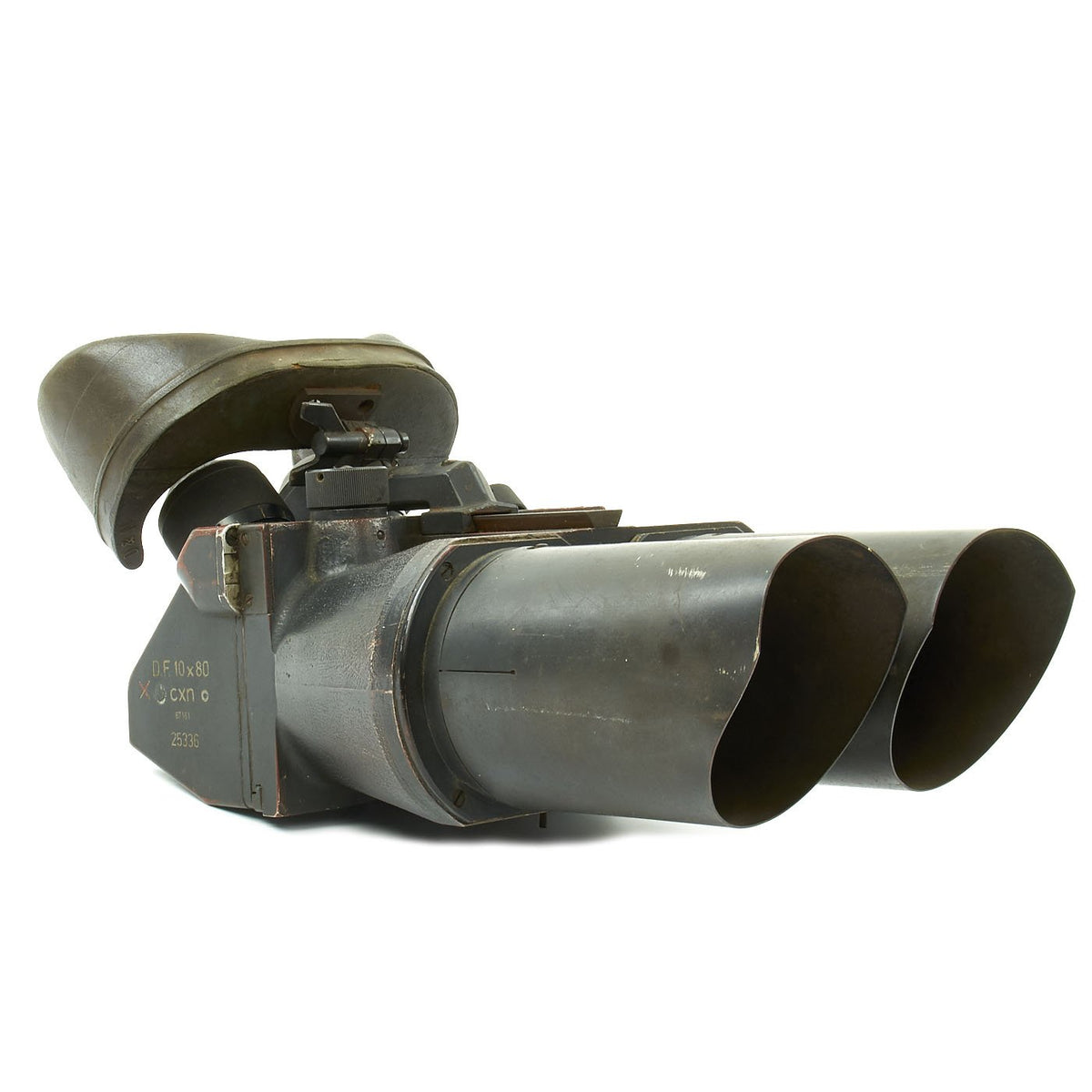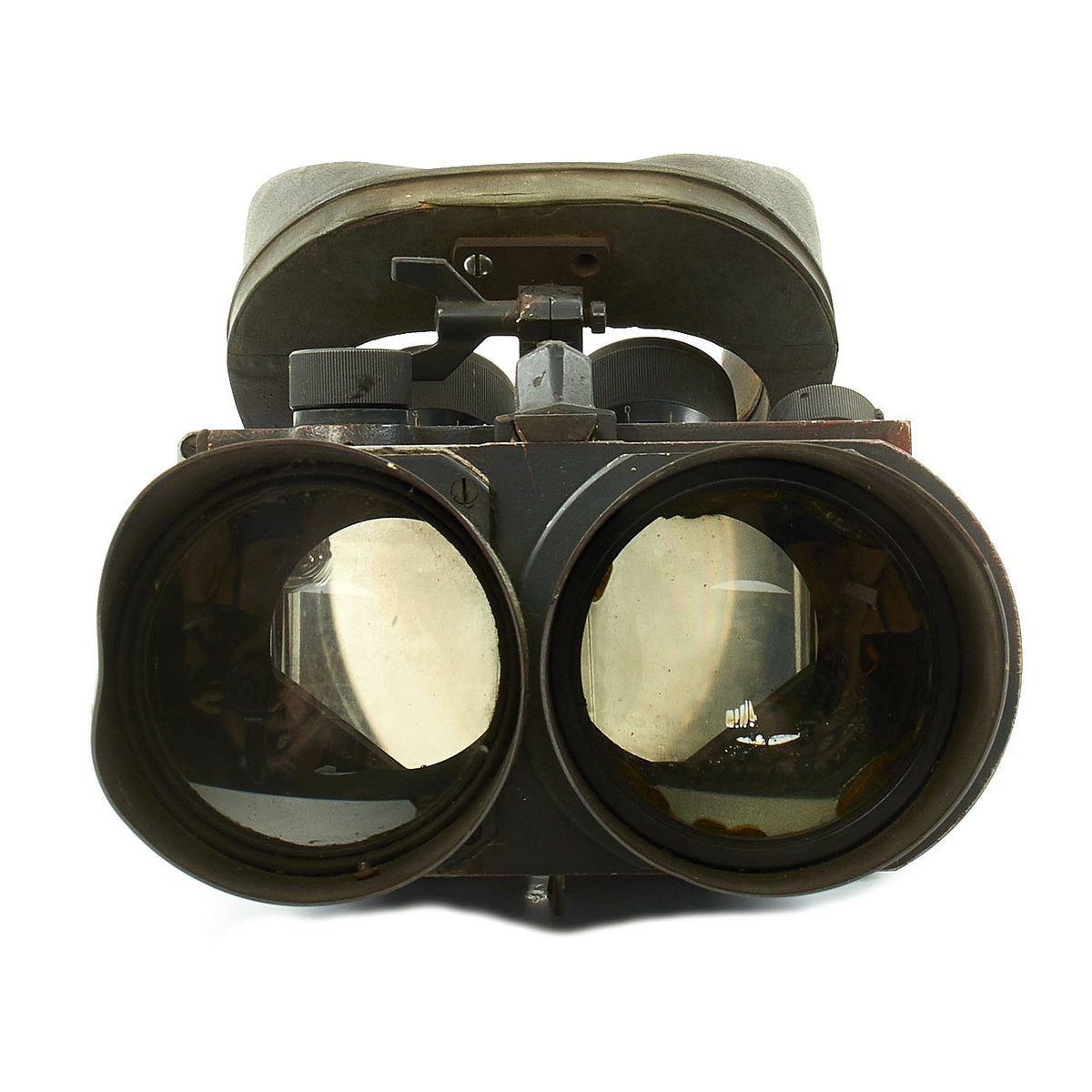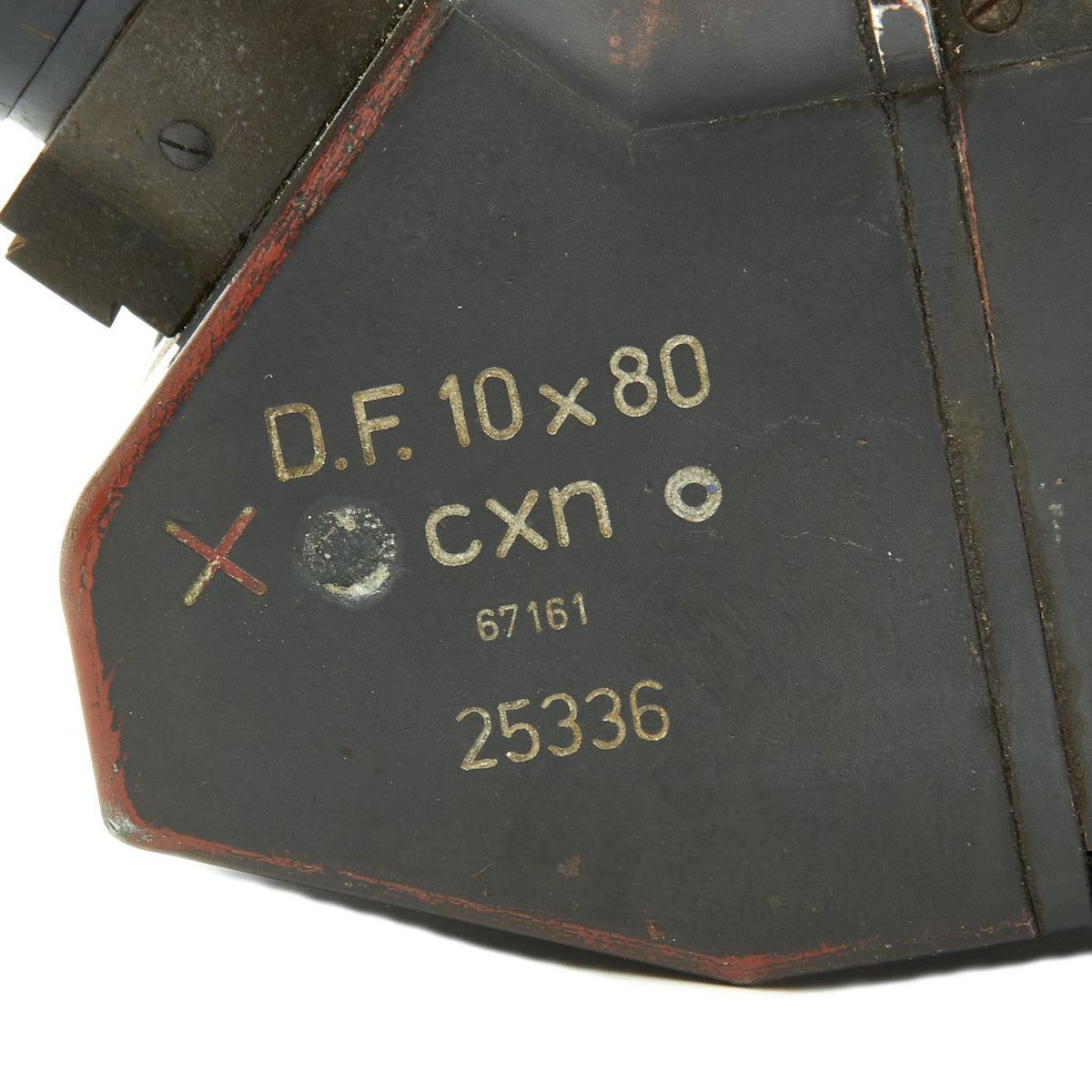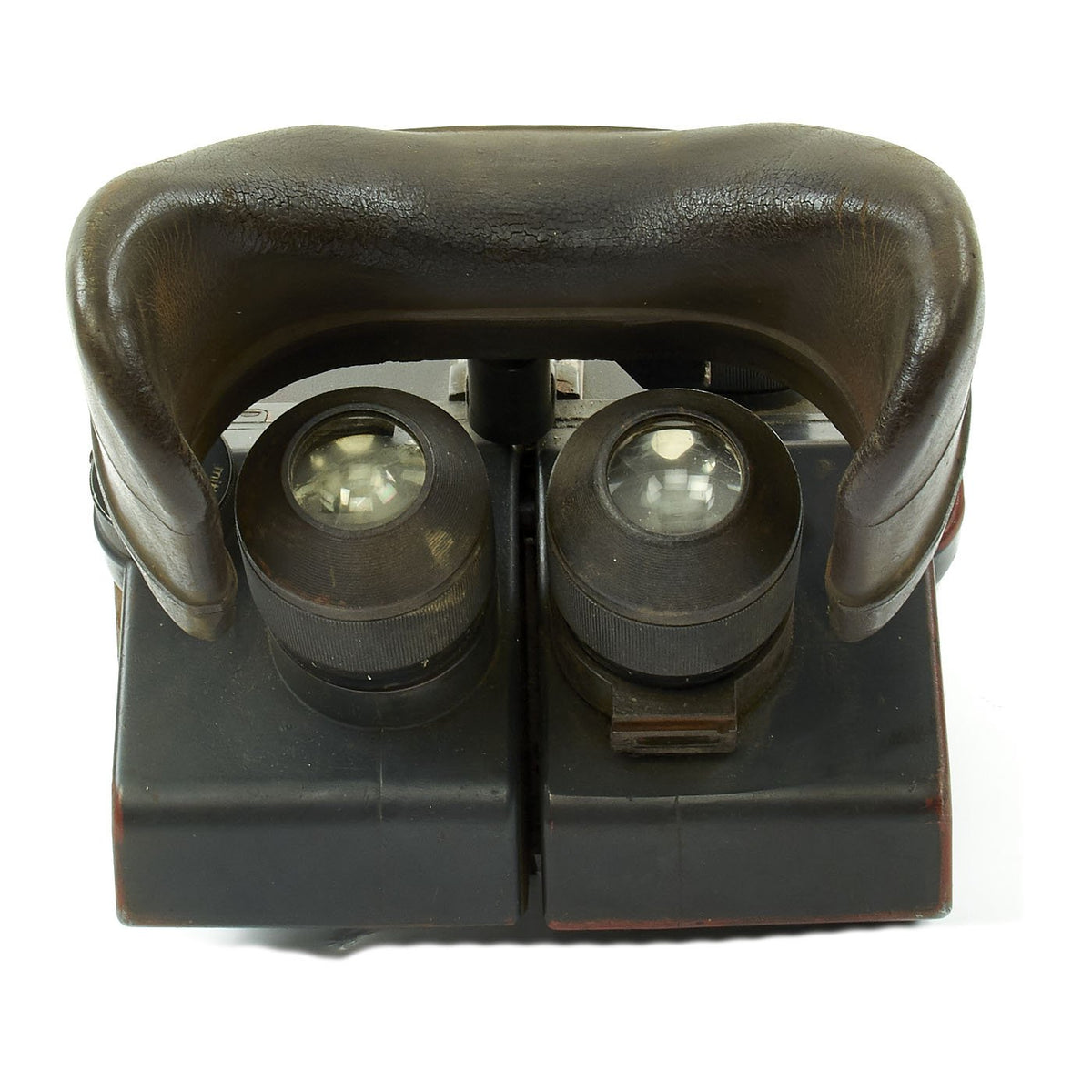Original German WWII Flak D.F. 10 x 80 Binocular Optics by Emil Busch AG in Luftwaffe Blue Original Items
$ 695,00 $ 208,50
Original Item: Only One Set Available. This is a great German World War Two Doppelfernrohr (double telescope) 10 x 80 German gun sight binoculars, produced by Emil Busch AG optics. These were used for direction sighting on the German Flak 36 (88 mm) Gun and are offered in very good condition. They painted a lovely deep gray blue finish, the typical color for Luftwaffe equipment. There is some wear, so the correct red primer can be seen in areas.
Most commonly seen being used by the KRIEGSMARINE (German Navy) on Ship Bridges and on Conning Towers of U-Boats, these are the giant 10 x 80 Binoculars so much favored in WWII. There are adjustments for eye relief, width and a selection of various tinted filters, which rotate into place using the control on the left side. The dial is labeled klar (clear), hell (light), mittel (medium), and dunkel (dark). In a typical example of German WW2 era (over)engineering, the control actually controls a mechanism that swings each individual filter in place on both sides simultaneously. A more modest implementation with filters that were fitted over the eye pieces would have probably been more economical. The filters still move, but the mechanism needs lubrication and can get stuck.
The Steel Sun Shades are still present and in good condition, and are removable if so desired. The right shield does have some damage on the bottom and side, and the left shield is missing the stop screw for the attachment. This set also includes the original padded head rest/shade, which is still soft, with minimal cracking.
The right side of the binocular body is marked:
D.F. 10 X 80
X cxn O
25336
D.F. Is the abbreviation for Doppelfernrohr (double telescope), with 10 x 80 indicating the magnification power of the optics. The German wartime three letter code “cxn” stands for Emil Busch AG of Rathenow, a maker of lenses and optical sights, and under that the set’s serial number is given. The colored symbols indicate the type of lubricants used on the set.
This set is fully operational, with partly clear optics, and fully functional focus and width adjustments. They are in very good condition, and do not appear to have been altered post war for attachment to a non military tripod, like many have been.
Fast Shipping with Professional Packaging
Thanks to our longstanding association with UPS FedEx DHL, and other major international carriers, we are able to provide a range of shipping options. Our warehouse staff is expertly trained and will wrap your products according to our exact and precise specifications. Prior to shipping, your goods will be thoroughly examined and securely secured. We ship to thousands clients each day across multiple countries. This shows how we're dedicated to be the largest retailer on the internet. Warehouses and distribution centres can be located throughout Europe as well as the USA.
Note: Orders with more than one item will be assigned a processing date depending on the item.
Before shipping before shipping, we'll conduct a thorough inspection of the items you have ordered. Today, the majority of orders will be delivered within 48 hours. The delivery time will be between 3-7 days.
Returns
The stock is dynamic and we cannot completely manage it because multiple stakeholders are involved, including our factory and warehouse. So the actual stock may alter at any time. It's possible that you may not receive your order once the order has been made.
Our policy is valid for a period of 30 days. If you don't receive the product within 30 days, we are not able to issue a refund or an exchange.
You can only return an item if it is unused and in the same state as the day you received it. You must have the item in its original packaging.
Related products
Uncategorized
Uncategorized
Armoured Fighting Vehicles of the World: AFVs of World War One (Hardcover Book) New Made Items
Uncategorized
Uncategorized
Uncategorized
Uncategorized
Uncategorized
Angolan Rebel 1970s era 60mm Inert Display Mortar from Angolan Civil War Original Items
Uncategorized
Uncategorized
Uncategorized
Uncategorized
Uncategorized
Uncategorized
Uncategorized
Uncategorized
Uncategorized
